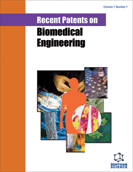Abstract
In recent years, Nitinol producers and medical products have experienced an exponential growth, driven by advanced manufacturing techniques and the use of progressively less invasive medical procedures. Concurrently, new processing techniques have been developed to further enhance the valuable properties of Nitinol used in medical devices; recent patents on these techniques include changing the composition of nickel and titanium, alloying the nickel-titanium with other elements, improving melting practices, heat-treating the alloy, and mechanical processing of the alloy. For example, alloying the nickel-titanium with ternary elements may widen the superelastic temperature operating window, maximize/minimize the stress-strain hysteresis, and improve the radiopacity of a Nitinol intraluminal device comparable to that of a stainless steel device of the same strut pattern coated with a thin layer of gold. Limiting to less than 30% the final cold work step (after a full anneal, and before the shape-setting step) may improve the Nitinol fatigue lifetime of about 37%, the fatigue lifetime being a primary factor limiting the performances of Nitinol endoluminal prosthetic implants. Local selective and differential thermo-mechanical treatments have also been devised to achieve different physical properties in different portions of a Nitinol medical device in order to improve its performance under expected operating conditions.
Keywords: Nitinol, NiTi, titanium, nickel, NiTi based alloys, superelastic, superelaticity, shape memory, processing, fatigue
 2
2

